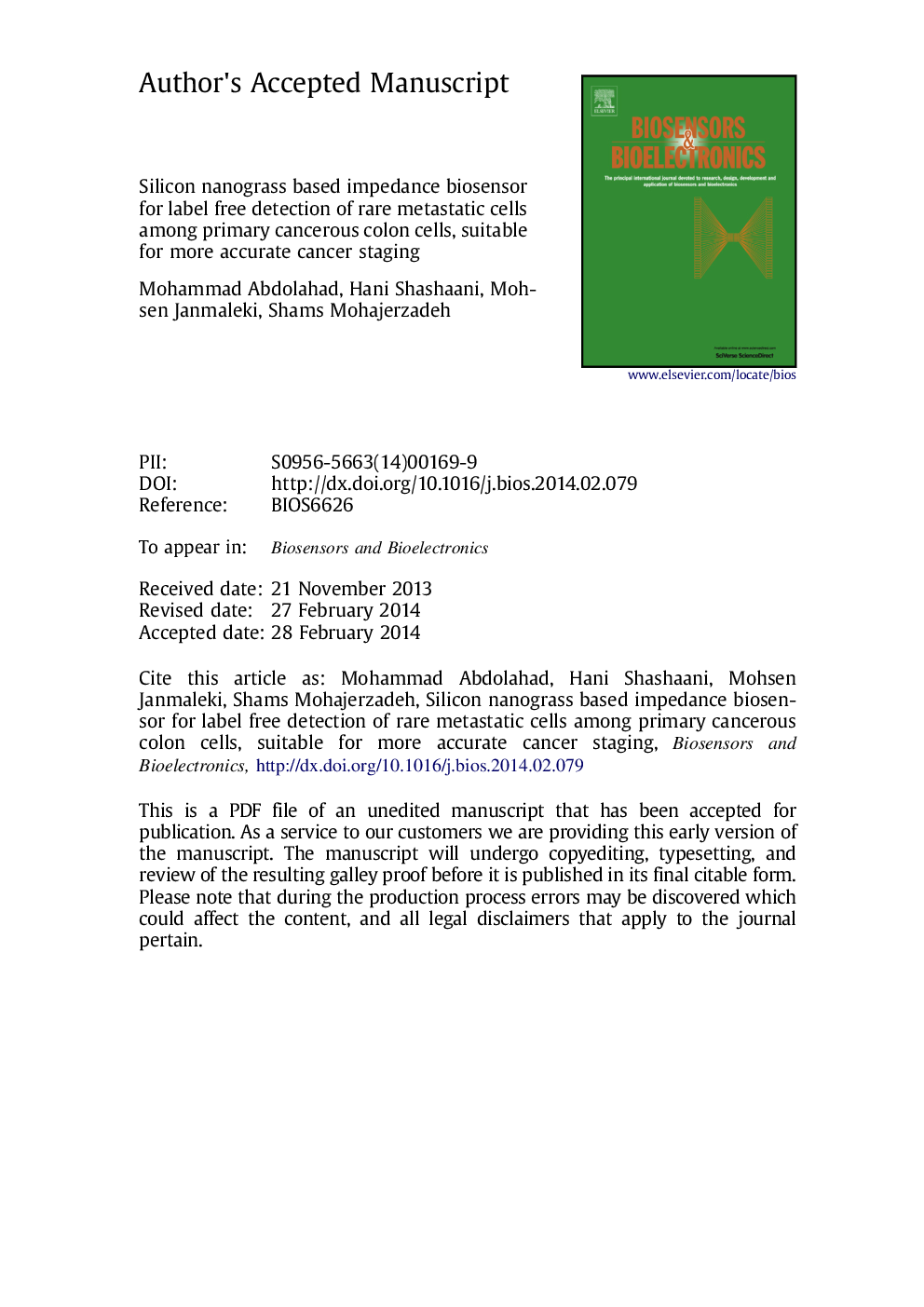| Article ID | Journal | Published Year | Pages | File Type |
|---|---|---|---|---|
| 7233478 | Biosensors and Bioelectronics | 2014 | 28 Pages |
Abstract
Detection of rare metastatic cells within a benign tumor is a key challenge to diagnose the cancerous stage of the patients tested by clinical human biopsy or pap smear samples. We have fabricated and tested a nanograssed silicon based bioelectronic device with the ability of detecting a few human colon invasive cancer cells (SW48) in a mixed cell culture of primary cancerous colon cells (HT29) without any biochemical labels. A discernible impedance change was elicited after the presence of 5% metastatic cells in the whole benign sample. The electric field penetration as well as current flow to metastatic cells is different from benign ones due to their different membrane dielectric parameters. Beta dispersion as one of intrinsic bioelectrical properties of the cell membrane in blocking the stimulating current flow in the range of kHz is the specific parameter involved in our diagnosis approach. It can reflect in-depth information about the dielectric properties and the pathological condition of a cell before and after metastatic transformation. Electrically active doped silicon nanograss structures owing to their superior nanocontacts with cell membrane can detect any slight variations in current being originated from the presence of rare metastatic cells on the surface of the sensing electrode. The experimental results revealed that bare doped silicon microelectrodes are incapable of resolving different grades of attached cells.
Keywords
Related Topics
Physical Sciences and Engineering
Chemistry
Analytical Chemistry
Authors
Mohammad Abdolahad, Hani Shashaani, Mohsen Janmaleki, Shams Mohajerzadeh,
